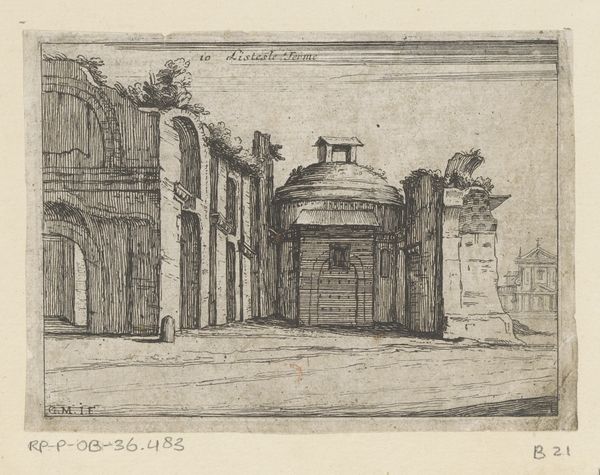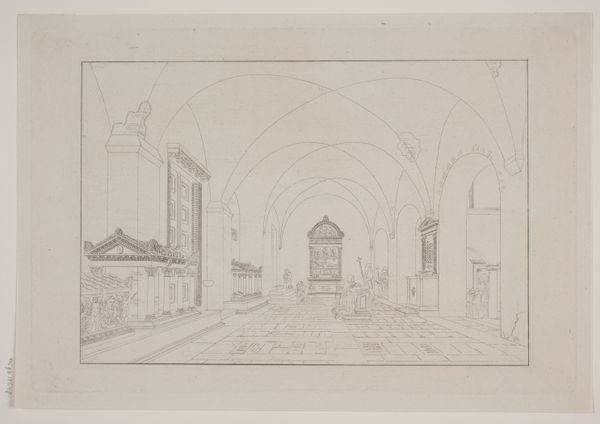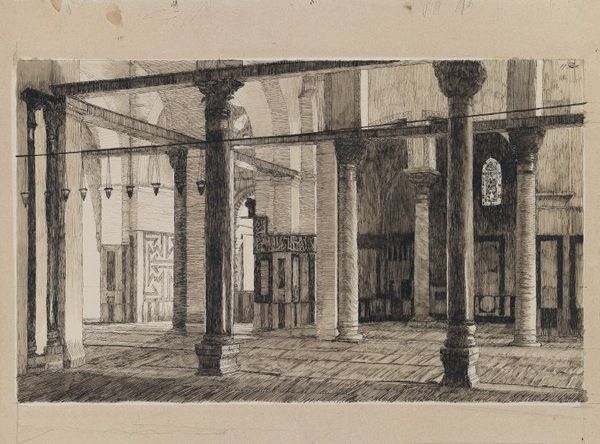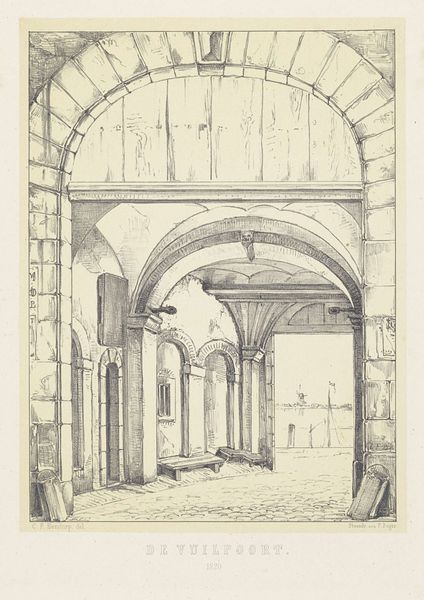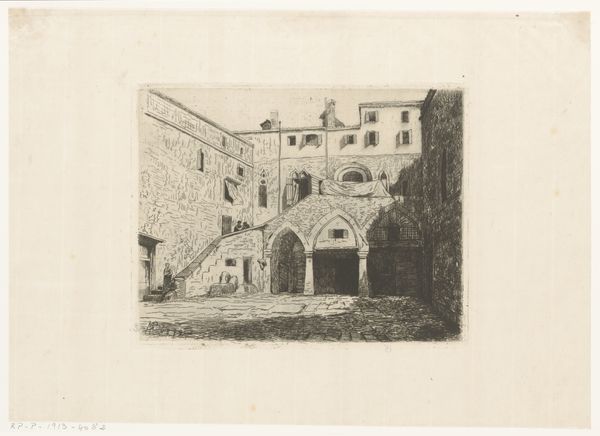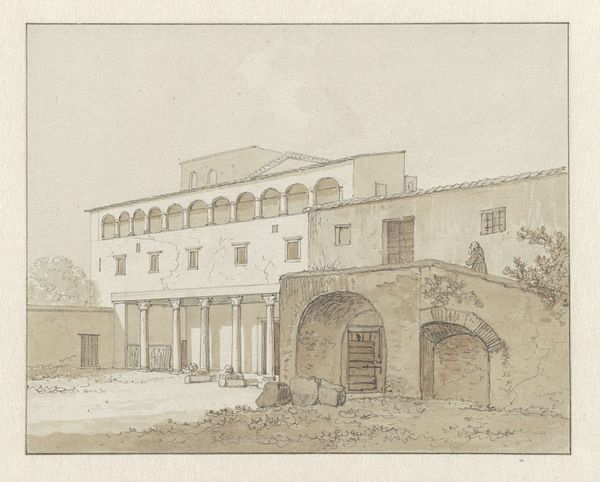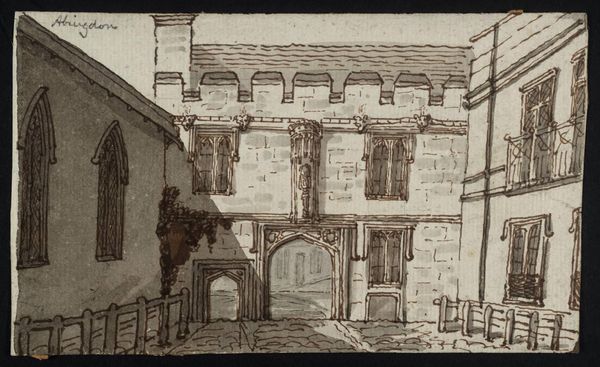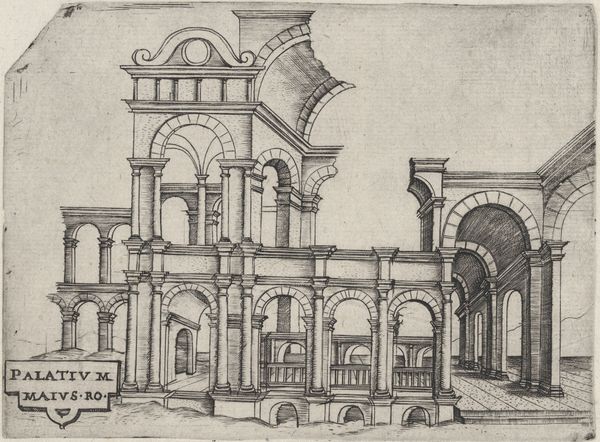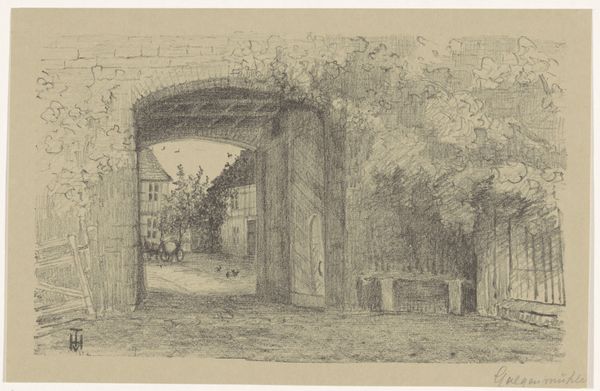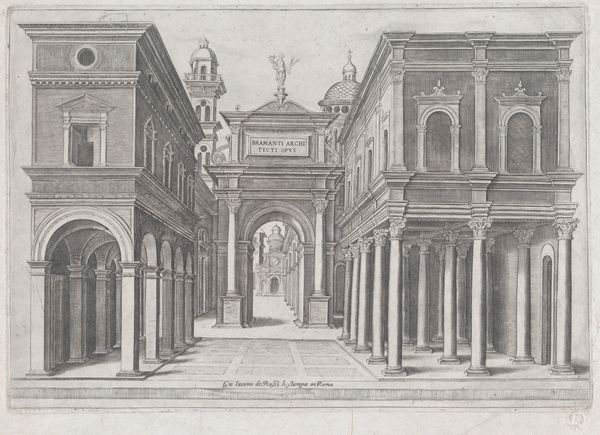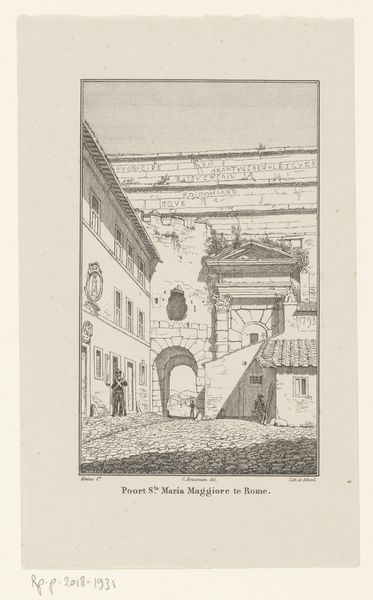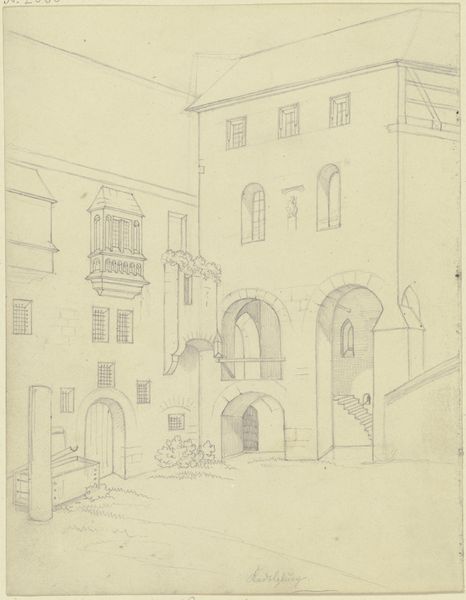
View of an Italian Colonnade and Courtyard c. early 19th century
0:00
0:00
drawing, ink, pen, architecture
#
drawing
#
neoclacissism
#
etching
#
ink
#
pen-ink sketch
#
architecture drawing
#
pen
#
history-painting
#
architecture
Dimensions: 3 9/16 x 5 1/2 in. (9.05 x 13.97 cm) (sheet)3 7/8 x 6 1/8 in. (9.84 x 15.56 cm) (mount)
Copyright: Public Domain
Curator: Let’s discuss this understated yet compelling drawing, "View of an Italian Colonnade and Courtyard," created circa the early 19th century by an anonymous artist. It’s a pen-and-ink sketch, held here at the Minneapolis Institute of Art. Editor: It's immediately striking. I'm drawn to the composition—the repetitive arches and the severe, linear perspective create a space that feels both grand and eerily empty. It gives off an intense sense of historical weight. Curator: Absolutely. The architecture itself is steeped in the Neoclassical style, which, arising in the mid-18th century, deliberately revived visual ideals from ancient Greece and Rome. Think of it as a response to the preceding Baroque and Rococo periods, which were seen as excessively ornamental and tied to aristocratic power. Editor: So this isn’t just about aesthetic preferences but also a societal shift. The return to classical forms was often linked with ideas of reason, order, and even revolutionary republicanism in the late 1700s. Curator: Precisely. These buildings become powerful statements about civic virtue, often utilized by new republics or empires trying to legitimize themselves through association with the perceived glory of antiquity. It’s fascinating to consider the message being conveyed through the public role of these architectural renderings and subsequent building projects. Editor: The austerity is telling, though. This feels like a sanitized version of power, stripped of the excesses but still firmly present. You have to ask, who had access to these spaces, both in the represented scene and in its reception as an image? What ideological work is this “view” doing? The empty courtyard seems almost staged for a parade, and not for ordinary people. Curator: That reading opens so many questions. When studying historical imagery, considering how architectural renderings such as this participated in constructing and promoting these ideologies is of key interest. Thank you for giving voice to that point of view. Editor: And thank you for placing this compelling image within the historical narrative that makes the politics of its form visible.
Comments
No comments
Be the first to comment and join the conversation on the ultimate creative platform.
